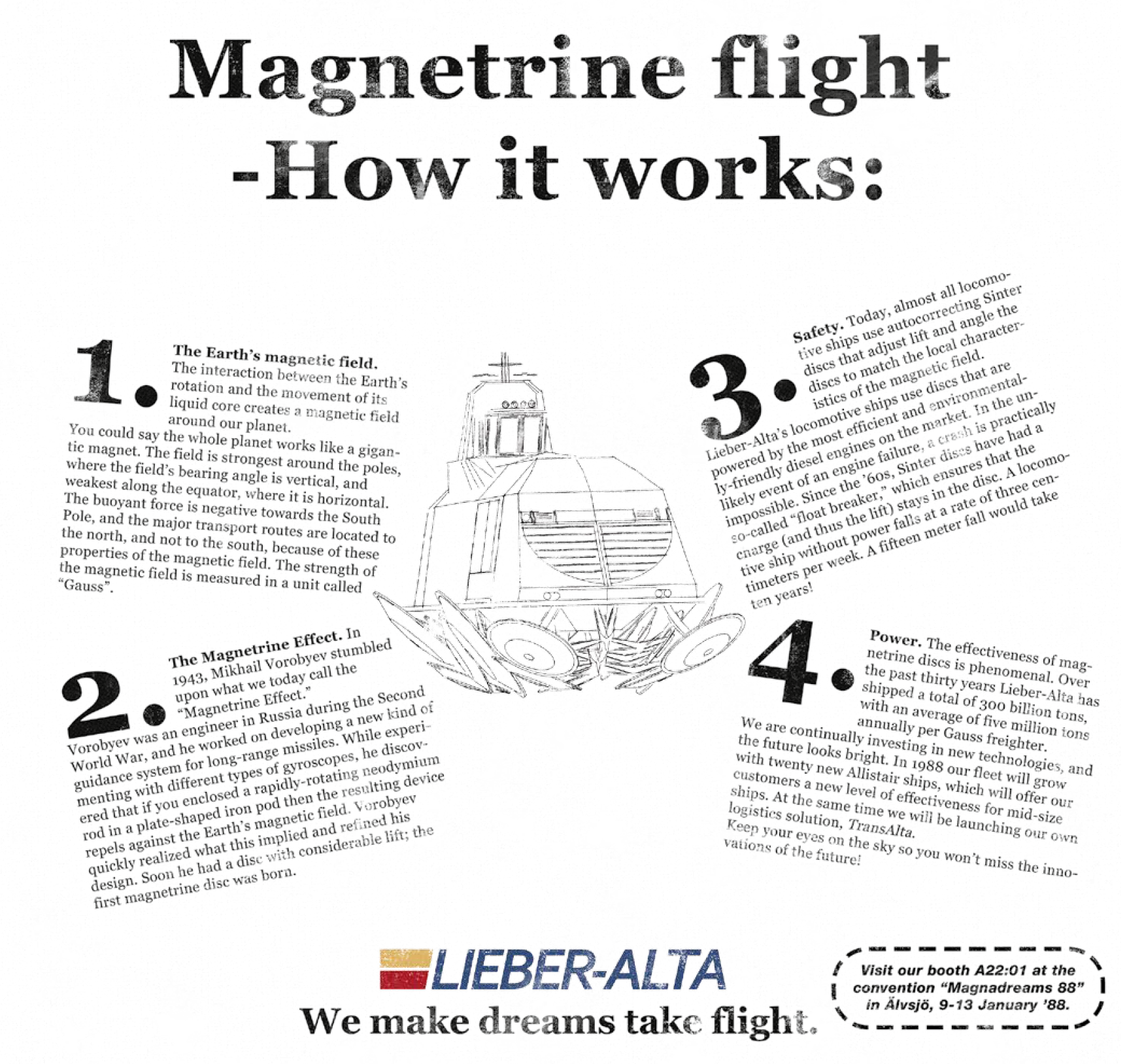The Magnetrine Effect
The discovery of the magnetrine effect in 1943 facilitated the revolution in transport technology that was to last for half a century. The Earth’s magnetic fields were strong enough to provide the needed lift north of a line spanning from the Mexican border to the Mediterranean, through the Middle East and along the Himalayas, and curving up towards Japan. This meant that magnetrine ships (also known as Gauss
freighters) can only travel along routes in the northern hemisphere, spanning the northern three quarters of the Eurasian continent, North America, and the north Atlantic and Pacific oceans. Traditional shipping by ocean-going ships is still very much in use, both in the rest of the world and in the magnetrine shipping zone. In Sweden, exports like cars, iron ore, paper, and timber are shipped via magnetrine ships to destinations ranging from Japan in the east to California in the west.
The powerful magnetic fields created by the larger magnetrine ships make it inconvenient to have them travel through densely populated areas, as they affect local electronics. They have to follow routes, usually the same as traditional ships, but also specially designated “corridors” across land. Smaller ships are less
risky, but they aren’t used in cities or other built-up areas, which is why older technology like trucks and trains are still used. Most coastal cities have magnetrine ship ports, where the cargo is usually loaded on trucks for local and regional distribution. Railway transport is faster than magnetrine vessels, and the same goes
for road transport. That’s why there’s a need for traditional wheeled vehicles.
Airplanes still have their role, too, as they are faster and not limited by the magnetic fields, but there are magnetrine luxury liners for those
who like to travel in style.
The principle of the magnetrine drive is simple:
magnetrine discs mounted along the bottom part of a hull are charged, the resulting magnetic field repelling the ship against the magnetic field of the Earth, providing the lift needed. The discs on modern vessels are auto-correcting, adjusting to local variations in the magnetic field. In order to propel the vessel, the discs are
engaged in sequences, rapidly changing the polarity of the discs in what is known as “caterpillar drive,” creating a pull-and-push effect that provides locomotion.
Most magnetrine ships are diesel-powered single or twin turbine vessels with a deadweight tonnage (DWT, the weight of everything the ship carries, excluding the ship itself) of up to 80,000 metric tons. Some of the largest freighters are nuclear-powered. The ships come in four classes:
- MAGLIGHT (5,000 to 10,000 DWT), up to 100 meters in length.
- MAGMID (10,000 to 25,000 DWT), up to 200 meters in length.
- MAGMAX (25,000 to 50,000 DWT), up to 250 meters in length.
- SUPERMAG (50,000 to 80,000 DWT), up to 300 meters in length.
Discovery
War Time research into magnetic fields as protective and propulsive technology. Developed into a flotation / lift technology in the 1950 by Soviet Scientists.
Remove these ads. Join the Worldbuilders Guild











Comments